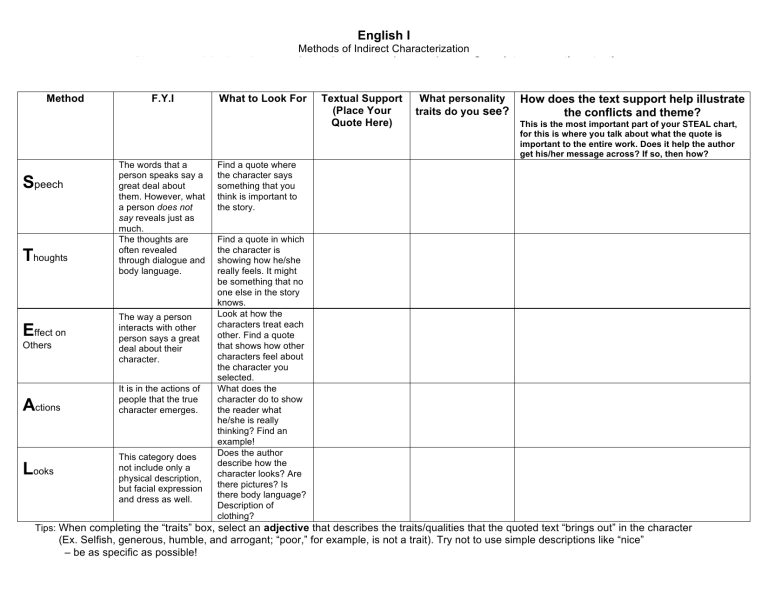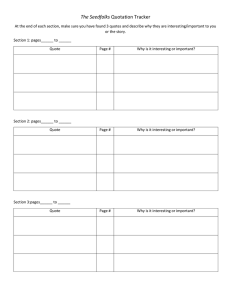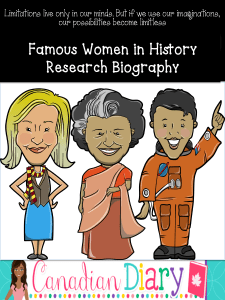
English I Methods of Indirect Characterization Please copy this chart into your journal as you work on each area. Complete one portion at a time. DO NOT attempt to “draw” chart first and then complete—you will not have enough room for responses. Method Speech Thoughts Effect on Others Actions Looks F.Y.I The words that a person speaks say a great deal about them. However, what a person does not say reveals just as much. The thoughts are often revealed through dialogue and body language. The way a person interacts with other person says a great deal about their character. It is in the actions of people that the true character emerges. This category does not include only a physical description, but facial expression and dress as well. What to Look For Textual Support (Place Your Quote Here) What personality traits do you see? How does the text support help illustrate the conflicts and theme? This is the most important part of your STEAL chart, for this is where you talk about what the quote is important to the entire work. Does it help the author get his/her message across? If so, then how? Find a quote where the character says something that you think is important to the story. Find a quote in which the character is showing how he/she really feels. It might be something that no one else in the story knows. Look at how the characters treat each other. Find a quote that shows how other characters feel about the character you selected. What does the character do to show the reader what he/she is really thinking? Find an example! Does the author describe how the character looks? Are there pictures? Is there body language? Description of clothing? Tips: When completing the “traits” box, select an adjective that describes the traits/qualities that the quoted text “brings out” in the character (Ex. Selfish, generous, humble, and arrogant; “poor,” for example, is not a trait). Try not to use simple descriptions like “nice” – be as specific as possible!



